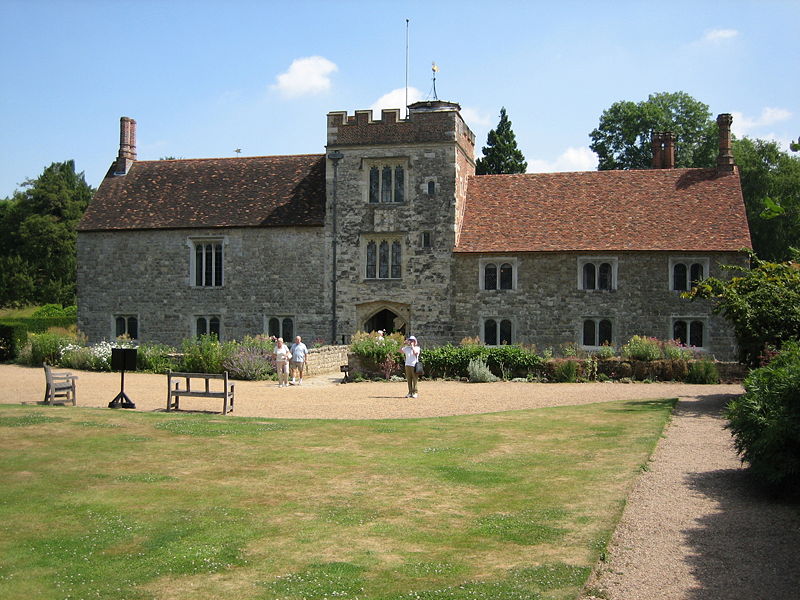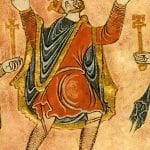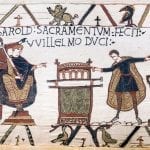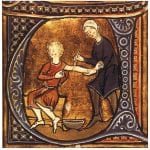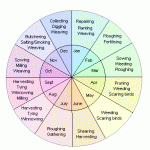Ightham Mote, a 14th-century moated medieval manor house in Kent, photo by Silver149
The parcel of land leased to a Baron by the King was known as a manor. Under the feudal system, the Baron had complete control of the running of the medieval manor provided he met certain obligations set by the King.
Medieval Manors: Castles
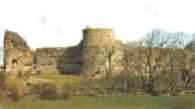
Most of the Barons who were given land by William the Conqueror, following his invasion and conquest of England in 1066, were French. They knew that many Saxons would be hostile to them and so they had to make sure that they could defend themselves. Many chose to build castles on their land and fill them with knights who, under the Feudal System, were bound to protect the Baron and his family. Others established large manor houses.
The Church
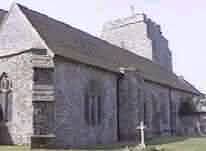
The church was another central feature of the medieval manor. The religion of the whole of Europe was Roman Catholic and it was law that people went to church on a Sunday. The leading churchmen of the land, Bishops and Archbishops were very wealthy and helped to govern the country. The local priests, however, were much poorer and were often uneducated. It was the priest’s job to look after the sick of the village as well as preaching in the church
Manor House
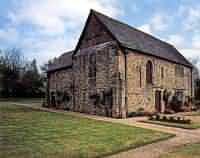
The medieval manor house was the home of the Baron. Manor houses were large, reflecting the wealth and status of the Lord. They often comprised several buildings and were mainly self-sufficient, growing their own food and keeping animals in the grounds surrounding the house.
Villeins (serfs, peasants)
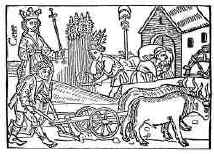
The largest amount of land on the medieval manor would be used by the villeins. Their house would be surrounded by a yard called a ‘toft’ and a garden called a ‘croft’. This land would be used for growing crops and vegetables, a percentage of which would be given to a knight as ‘payment’ for their land. Villein’s houses were one-roomed and the family shared the space with the animals.
This article is part of our larger selection of posts about the medieval period. To learn more, click here for our comprehensive guide to the Middle Ages.
This article is also part of our larger selection of posts about Medieval Life. To learn more, click here for our comprehensive guide to Medieval Life.
Cite This Article
"The Medieval Manor" History on the Net© 2000-2024, Salem Media.
May 18, 2024 <https://www.historyonthenet.com/the-medieval-manor>
More Citation Information.



